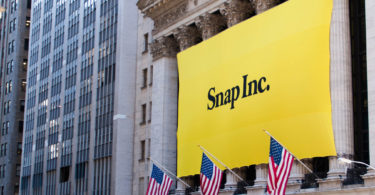This article was originally posted here
Penny stocks have a low barrier to entry. For a few dollars you can buy a stake in multiple companies. But they can be hard to track down. That’s why we’ve put together a list of penny stocks.
The list below offers high risk-to-reward investment opportunities. Some of the stocks might double or even triple your money in little time. But with that opportunity comes downside risk. I’ll cover the risk and reward in more detail below, but first, here’s a list of the top penny stocks.
Top Penny Stocks List of 20 Companies
*Stock data from December 6, 2019
| Ticker | Market Cap | Price | Exchange |
| GSAT | $679 million | $0.467 | NYSE |
| UEC | $179 million | $0.982 | NYSE |
| MDR | $140 million | $0.767 | NYSE |
| FCEL | $108 million | $0.558 | Nasdaq |
| LQMT | $106 million | $0.117 | OTC |
| INVU | $101 million | $0.037 | OTC |
| CVSI | $86 million | $0.860 | OTC |
| ASNA | $85 million | $0.430 | Nasdaq |
| TRVN | $65 million | $0.701 | Nasdaq |
| TEUM | $62 million | $0.450 | Nasdaq |
| ASRT | $57 million | $0.707 | Nasdaq |
| TRXC | $46 million | $0.182 | NYSE |
| PMCB | $45 million | $0.034 | OTC |
| AXAS | $43 million | $0.258 | Nasdaq |
| ATNM | $42 million | $0.253 | NYSE |
| QUIK | $40 million | $0.331 | Nasdaq |
| WTRH | $37 million | $0.480 | Nasdaq |
| SNSS | $36 million | $0.320 | Nasdaq |
| ADXS | $36 million | $0.740 | Nasdaq |
| ADMP | $34 million | $0.559 | Nasdaq |
Editor's Note: The $3 “Stock of the Year”
Why are Penny Stocks High-Risk, High-Reward Investments?
Risk
Most penny stocks are shares of microcap companies valued at $300 million or below. As a result, they don’t have the scale to justify listing shares on major exchanges. The major exchanges require costly auditing and reporting, along with other requirements like a higher share price.
Small company size and lack of reporting can lead to big price swings. Penny stocks can have a big drop in value in a short amount of time.
Some companies in the penny stocks list also trade over the counter (OTC). Instead of trading on a centralized exchange, they go through a broker-dealer network. For example, Pink Sheets is a business that helps bring small company shares to market.
Due to these smaller networks, penny stocks are less liquid. It might take longer to fill your buy or sell orders. This can also lead to higher implicit trading fees. The bid-ask is wider to compensate brokers. On top of that, the smaller size keeps many analysts away…
Reward
When fewer people analyze and trade ownership in a business, there’s the potential for larger price deviation from intrinsic value. So you might be able to find great businesses trading at deep discounts.
Lower prices can also give insiders an edge. Insider trading is not illegal if the insiders wait for inside information to become public and report their trading activity. Investors can then follow their investment moves thanks to public disclosure requirements.
Many small cap stocks also have larger growth opportunities. Some of the businesses only address a small piece of the markets they operate in. So if they gain more market share, they can easily double or triple in size.
Don’t Bet the Farm
The reward potential is high with any given penny stock… but so is the risk. So don’t bet the farm on just one. The following table is a great reminder to never put too much money into one trade…
| Loss | Return to Breakeven |
| -10% | 11% |
| -20% | 25% |
| -30% | 43% |
| -50% | 100% |
| -90% | 900% |
If you put all of your money in a penny stock that loses 90% of its value, it would take a 900% gain to reach breakeven. And a 900% gain doesn’t come around too often. So instead of betting big on one company, you can buy a basket of penny stocks to limit risk.
A good rule of thumb is to put no more than 4% of your total portfolio in any one position. Then if you combine that with a 25% stop loss, you limit your total portfolio loss to 1% on any given trade.
How to Trade Penny Stocks
Trading penny stocks has never been easier. You can set up an account with an online broker such as Robinhood. It’s as easy as setting up a bank account. Then once you’ve verified your account and put some money into it, you can start trading.
I hope you find the penny stock list above to be helpful. It’s a good starting point, but you should always do your own research before investing. And if you want expert trading insight…
Editor's Note: Copy-Paste JPMorgan's 99.52% Winning Trades
How would your life change if 9 out of 10 your trades were winners?
If that sounds impossible, you’re in for a shock.
JPMorgan’s trading desk produced a 99.52% win rate from 2013 through 2017. That includes 2 straight years without a losing day.
Thanks to a research breakthrough, you’re now able to “piggyback” on these elite investors who almost never lose.
- Pinpoint where massive institutions like JPMorgan are starting to invest their billions right now
- “Copy and paste” their trades, and
- Let them push your portfolio higher as they build huge positions in stocks you just picked up
My company just recommended 51 winning trades in a single day using this method.
As a Wall Street insider, I’m breaking rank to share this powerful secret with individual investors like you. Click here to discover how our readers are banking quick gains up to 487% and more.
You’ll never look at the stock market the same way again.








